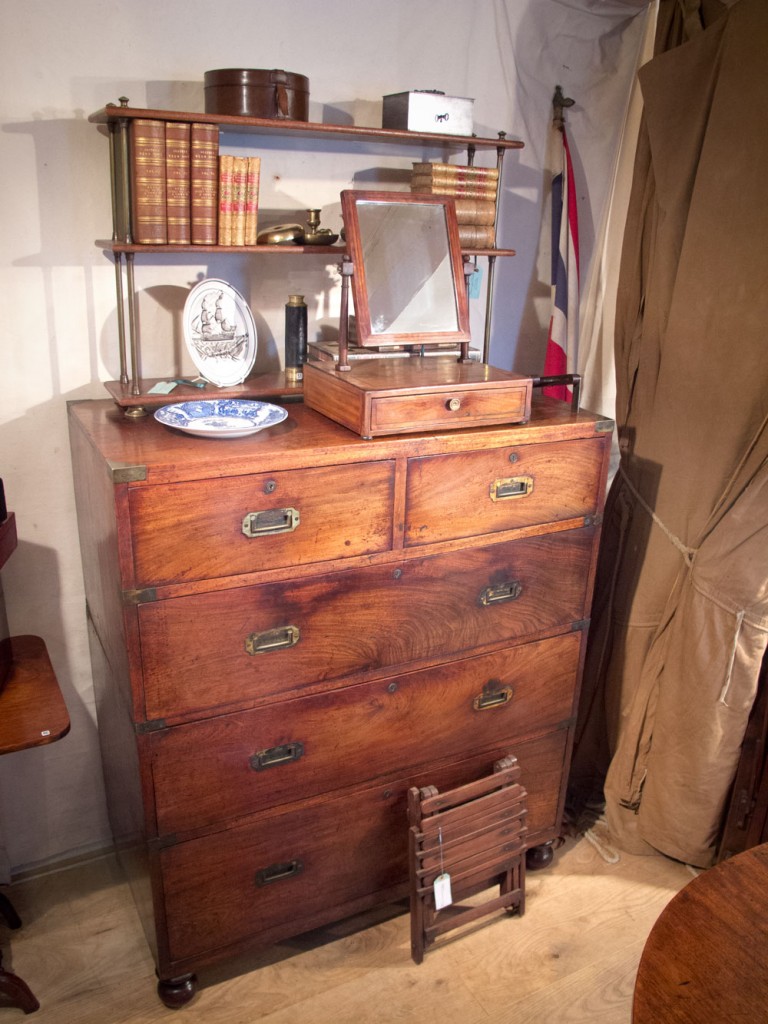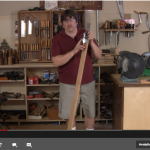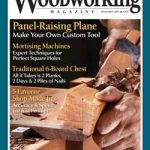We may receive a commission when you use our affiliate links. However, this does not impact our recommendations.
This week I’m in England doing research for my next book, “Campaign Furniture,” and spent today geeking out with Sean and Simon Clarke of Christopher Clarke Antiques – the world’s leading dealer of campaign antiquities.
The Clarke brothers have handled thousands of pieces of campaign furniture built during two centuries of the peak of the British Empire. Even more important, Sean and Simon have been compiling a digital and printed archive of these pieces to fill in the gaping holes of missing knowledge on this enduring furniture style (yes, they are working on a grand opus of a book, but it will take some time).
In the meantime, Sean and Simon were happy to share their thoughts, findings and theories on the style – things that I’ve not seen written down or even discussed by the American dealers I’ve talked to.
Though I took pages and pages of notes for my book, here are a few details (and don’t miss the gallery of photos at the bottom of the page).
1. Evolution from the Georgian and Chinese: Sean Clarke makes the case that the unadorned campaign chests we know had evolved from two main sources: Georgian furniture (minus some mouldings) and a form of traveling furniture used by Chinese government officials.
Equally tantalizing is how campaign furniture went on to influence 20th-century makers, especially the Scandinavian designers, making it an important link between the 18th and 20th centuries.
2. Notes on Brasses. Despite what I see in the shops of U.S. dealers, the Clarkes have found that few campaign chests have lifts on the ends of the chests. Some of these lifts have been added by dealers later on. Note: My last two chests have had these lifts. Oops.
3. Joinery. We disassembled one very typical campaign chest to look inside for evidence of construction techniques. Interesting things I saw: Overcuts for the blind dovetails that joined the chest’s top and ends. The dust panels were not secured in a full web frame (the back stile was absent. The secretary drawer was secured with a Quaker-style spring lock.
I could go on and on, but I’d soon have a chapter of a book.
If you are fan of campaign furniture, bookmark the shop’s web site, Christopher Clarke Antiques, as it is updated regularly with very nice descriptions and photographs of the pieces they offer.
— Christopher Schwarz
I’ve written two articles for Popular Woodworking Magazine about campaign furniture. One is a short introduction to the style, with an emphasis on the chests, which was published in the August 2012 issue. The other story, on Roorkhee chairs, was published in the October 2012 issue.
Here are some supplies and tools we find essential in our everyday work around the shop. We may receive a commission from sales referred by our links; however, we have carefully selected these products for their usefulness and quality.





















I am looking forward to your book. I am hopeful that it will contain plans. Because you stated in your article that early chests were made of Camphor, and because I have a quantity of Camphor, my plan is to build a desk much like the one in your article with dimensions altered to accomodate the planned space for it.
I have that childs folding chair in the cover shot! It was my chair as a child and I took it on all our travels. I often marveled at how the pieces fit together when folded. I still have it, so if you ever want one to measure, just let me know.
Just by coincidence, I was talking to Sean two days ago and he mentioned that a great deal of this furniture was sold to folks whom had booked passage by ship. The staterooms were not furnished.
Should we expect something about Roubo’s campaign furniture?
Chris,
I cannot help but feel a large part of the history of this type of furniture is being overlooked. While colonial Great Britain was expanding its holding in the Far East in the 19th Century, it was the British Navy that had projected British Power in the centuries before. Furniture of this type was developed for British Naval Officers who needed a place to store uniforms, personal items, navigation equipment, etc. and complete logs and other paperwork. That furniture also needed to be quickly packed and stowed in the hold when the ship was cleared for battle. Even the handles were of import with the Navy furniture to tie down the cases for inclement weather. My guess is that the British Army “borrowed” the designs. Is your book going to discuss this era or concentrate on the 19th Century pieces?
Tadd
So does this mean that in a year or so every woodworking blog will be filled with pictures of how they made the Chris Schwarz campaign chest?
Not sure of your time table for your book, but if you’re looking for more ideas, the coaching table above would be cool and a three fold wedged campaign desk would also be cool:
http://campaignfurniture.com/archivesdetailspage.asp?StockNo=7134&archive=0
(Per the Clarke website, it’s in stock so measure away.)
What crappy workmanship – not a clocked screw in the lot. Come home.